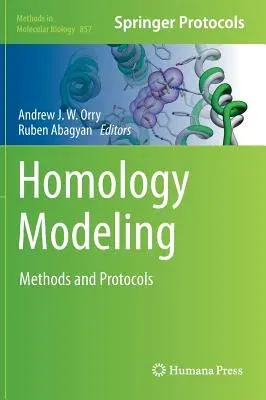Homology Modeling: Methods and Protocols (2012)Hardcover - 2012, 10 February 2012

Qty
1
Turbo
Ships in 2 - 3 days
In Stock
Free Delivery
Cash on Delivery
15 Days
Free Returns
Secure Checkout

Part of Series
Methods in Molecular Biology
Print Length
419 pages
Language
English
Publisher
Humana
Date Published
10 Feb 2012
ISBN-10
1617795879
ISBN-13
9781617795879
Description
Product Details
Book Edition:
2012
Book Format:
Hardcover
Country of Origin:
NL
Date Published:
10 February 2012
Dimensions:
25.65 x
17.78 x
2.79 cm
Genre:
Science/Technology Aspects
ISBN-10:
1617795879
ISBN-13:
9781617795879
Language:
English
Location:
Totowa, NJ
Pages:
419
Publisher:
Series:
Weight:
957.08 gm